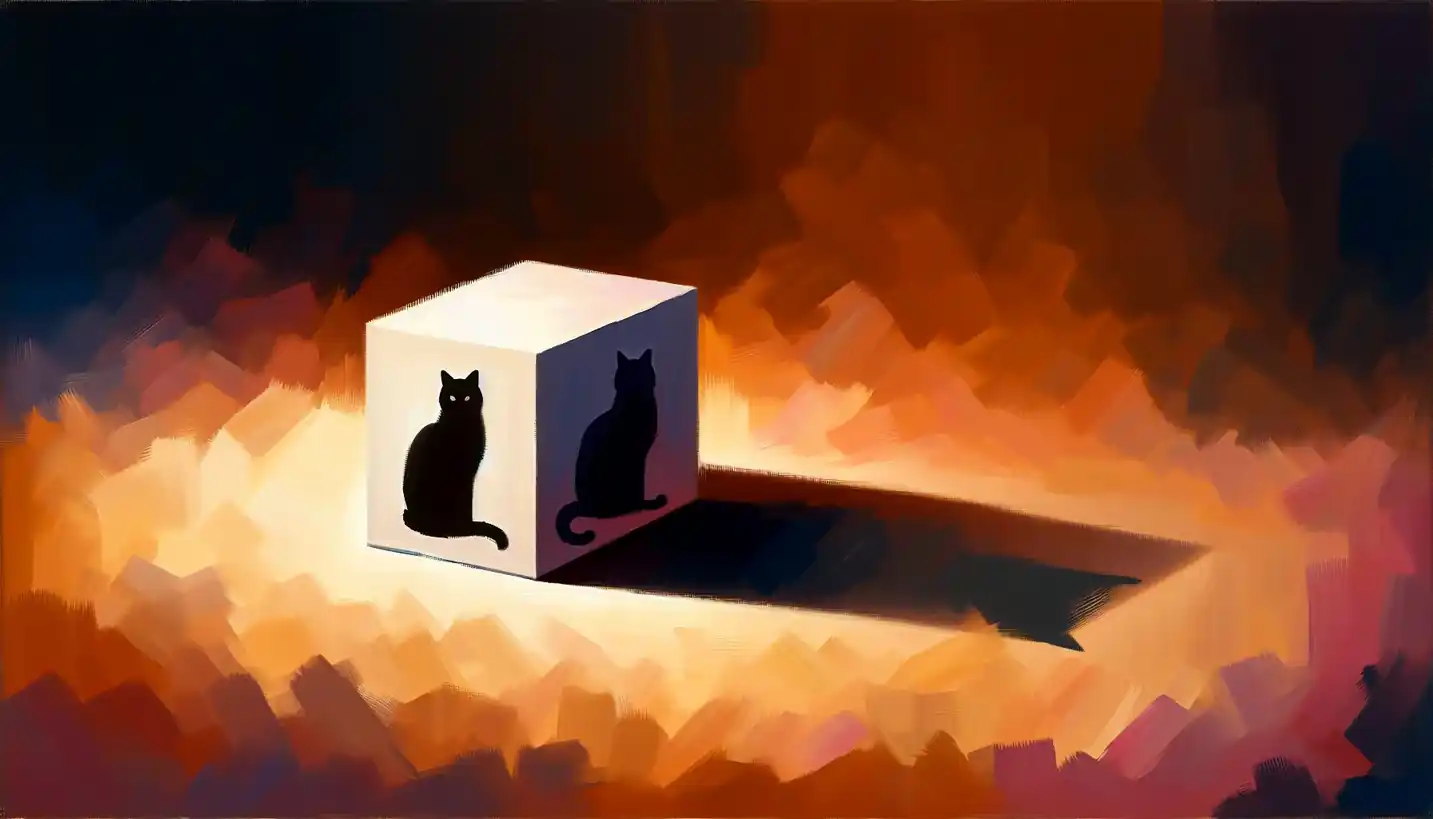· Physics · 5 min read
Calabi-Yau Manifolds: The Hidden Geometry of the Universe
Calabi-Yau manifolds are geometric wonders that shape string theory's multidimensional universe. Discover their hidden beauty and vital role in cosmology.

In the mysterious world of theoretical physics, there’s a concept that might just hold the secrets to the universe: Calabi-Yau manifolds. These fascinating mathematical shapes are central to string theory, a framework that attempts to weave together all the forces of nature.
Unveiling Calabi-Yau Manifolds
Let’s start by picturing an ordinary rubber band. Stretch and twist it, and you’ll get a sense of how it can change shape. Now, imagine doing this in a world with six hidden dimensions. Calabi-Yau manifolds are the structures that might exist in these concealed realms.
These manifolds are complex and multidimensional. In our regular three-dimensional world, imagining such shapes can be tricky. But if you think of them as a kind of intricate origami, folded in dimensions we can’t directly see, it becomes a bit easier to grasp. They have a special property: they’re “compact,” meaning they’re folded in on themselves without any boundaries, and “Kähler,” a complex way of being symmetrical.
The Connection with String Theory
String theory suggests that the tiny particles making up everything are actually tiny vibrating strings. These strings need space to vibrate, and the space is provided by the Calabi-Yau manifolds. Just like the strings on a violin produce sound depending on their shape and tension, the strings of the universe create matter and force depending on the shape of the Calabi-Yau manifold.
Each manifold offers different “tones” or “vibrations,” which correspond to different types of particles in our universe. This means the exact nature of the universe could be determined by which Calabi-Yau shape it wraps itself around.
The Magic Number: Six
You might wonder why six extra dimensions. This number isn’t just plucked from thin air. In string theory, the mathematics works out best when these additional dimensions complement our known four (three spatial and one temporal), adding up to ten. These additional six dimensions remain compactified in Calabi-Yau manifolds, hidden from direct observation but crucial for making the math work.
Why Do They Matter?
The inclusion of Calabi-Yau manifolds is not just a whimsical addition to string theory. They allow for the unification of gravity with the other three fundamental forces: electromagnetic, strong, and weak forces. This unification could potentially lead to a “theory of everything,” an ultimate explanation of the entire universe.
Imagine all the forces of nature as notes in a symphony. While we are familiar with some, there could be hidden notes, only detectable when we understand the complete symphony – the role Calabi-Yau manifolds might play.
The Story Behind the Name
The tale of Calabi-Yau manifolds starts with two mathematicians: Eugenio Calabi and Shing-Tung Yau. In the 1950s, Calabi proposed a conjecture about specific complex manifolds, which was later proven by Yau in the 1970s. Their combined insight laid the groundwork for these structures, which eventually caught the attention of physicists delving into string theory.
Imagining the Unseen
To visualize a Calabi-Yau manifold, imagine a soap bubble, spanning into shapes more complex than the eye can see. Their visualizations are often colorful and intricate, beautiful by themselves, showing the hidden beauty woven into the fabric of space.
These manifolds are not static. They’re dynamic and capable of evolving, morphing like shifting sands. This dynamic nature might even allow them to explain cosmic changes and patterns, such as the distribution of galaxies throughout the universe.
The Hunt for Physical Evidence
One might wonder why we don’t see these extra dimensions if they hold such importance. They’re sheltering within the tiny scales of the quantum realm, where our current technology can’t yet reach. Physics is like a grand detective story, and right now, we’re on a quest to find traces of these hidden dimensions.
Researchers hope that subtle effects, possibly seen in particle collider experiments like those at CERN, could hint at hidden dimensions. Such discoveries might reveal the true shapes of Calabi-Yau manifolds, offering profound insights into the universe.
Future Prospects and Challenges
String theory, along with Calabi-Yau manifolds, presents both dazzling possibilities and daunting challenges. Making bold predictions, it ventures where traditional physics hasn’t. While it promises a unified theory, proving this mathematically complex theory remains a Herculean task.
The math behind these manifolds is mind-bending, filled with enigmatic symbols and abstract concepts. However, pioneering mathematicians and physicists continue to grapple, aiming to decipher this cosmic puzzle.
Why Stay Curious?
Understanding Calabi-Yau manifolds encourages curiosity about the universe. They unlock doors to questions like: Are there universes with different dimensions and physics? Could there be parallel worlds emerging from different manifold shapes?
Questions like these keep the spirit of discovery alive, reminding us how much we have yet to learn about the cosmos.
Final Thoughts
Calabi-Yau manifolds, with their hidden complexity and elegant geometry, offer a captivating glimpse into the potential unseen structures of the universe. They are a blend of intricate mathematics and cosmic curiosity, and might someday answer some of our most profound questions about reality.
Exploring these mysterious shapes encourages a colorful dance between physics and mathematics, pushing the boundaries of what we know. In the end, Calabi-Yau manifolds show us that the universe is perhaps more wondrous and strange than our wildest imaginations.



